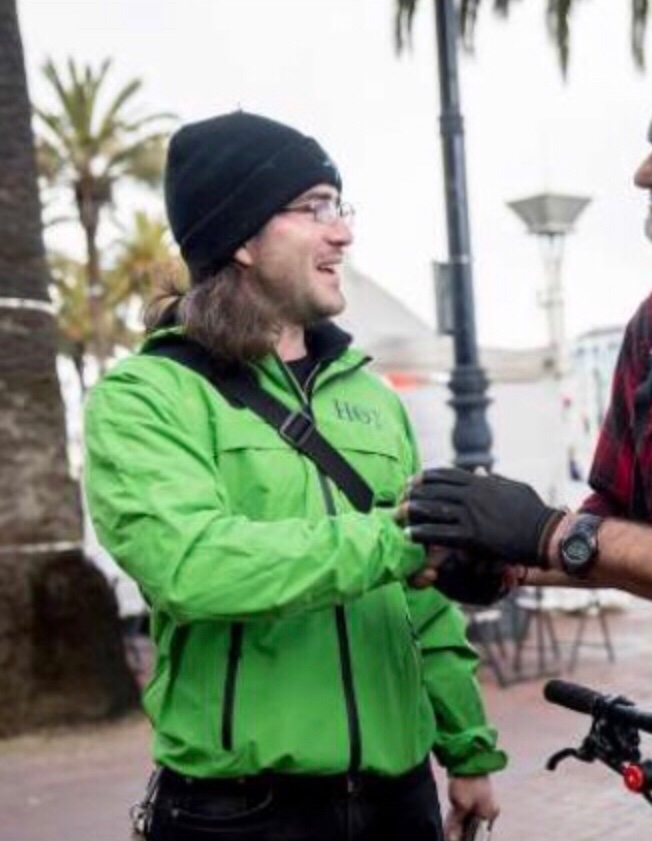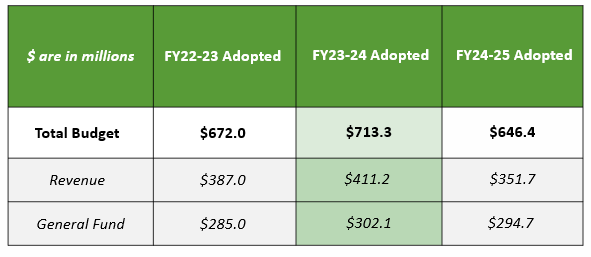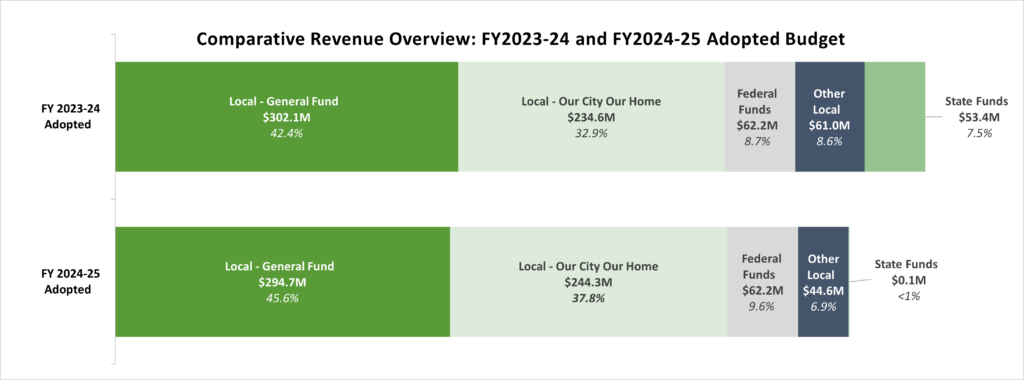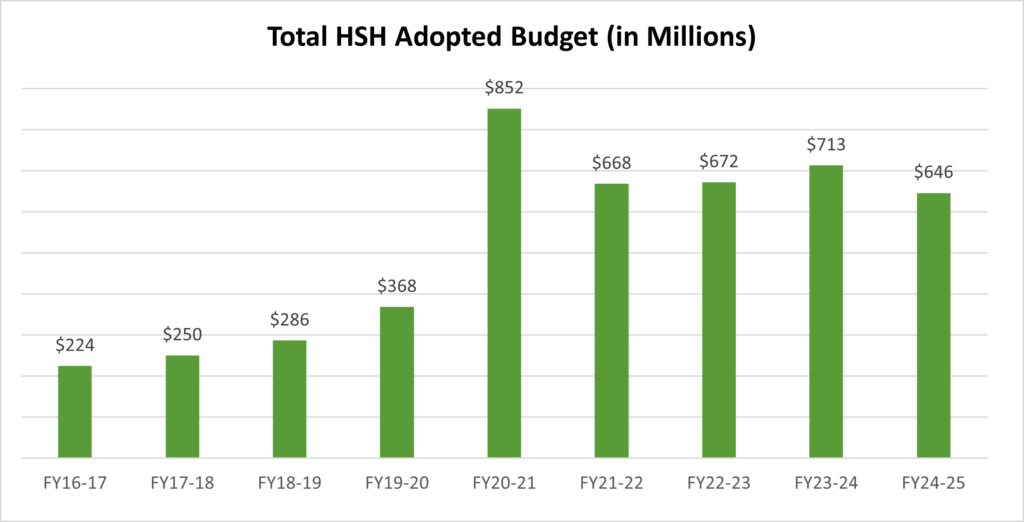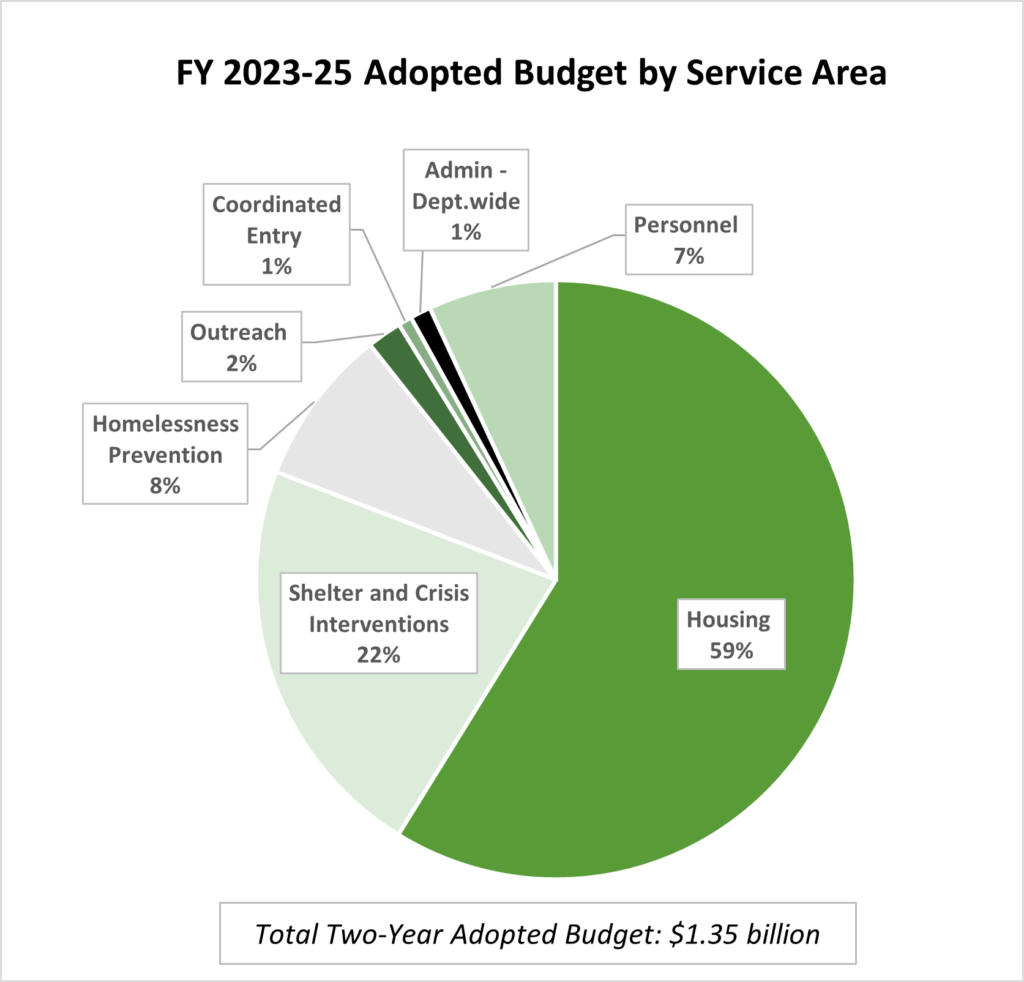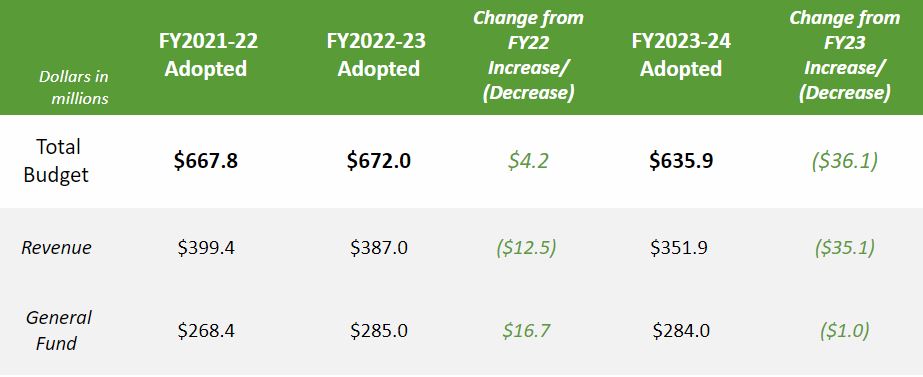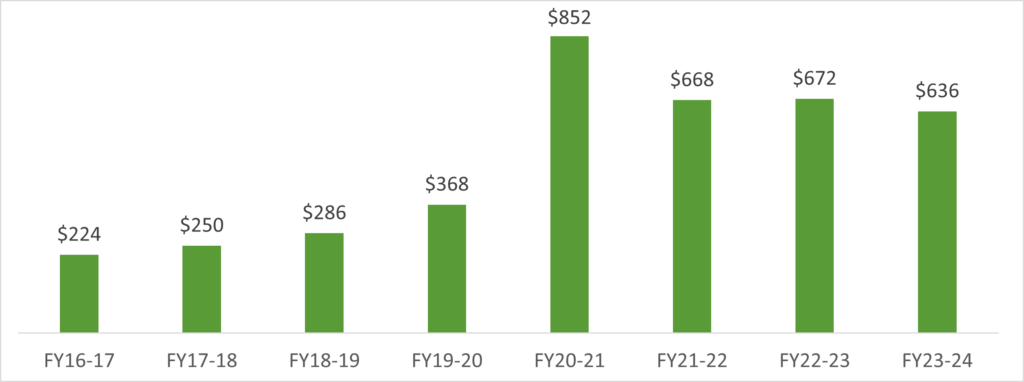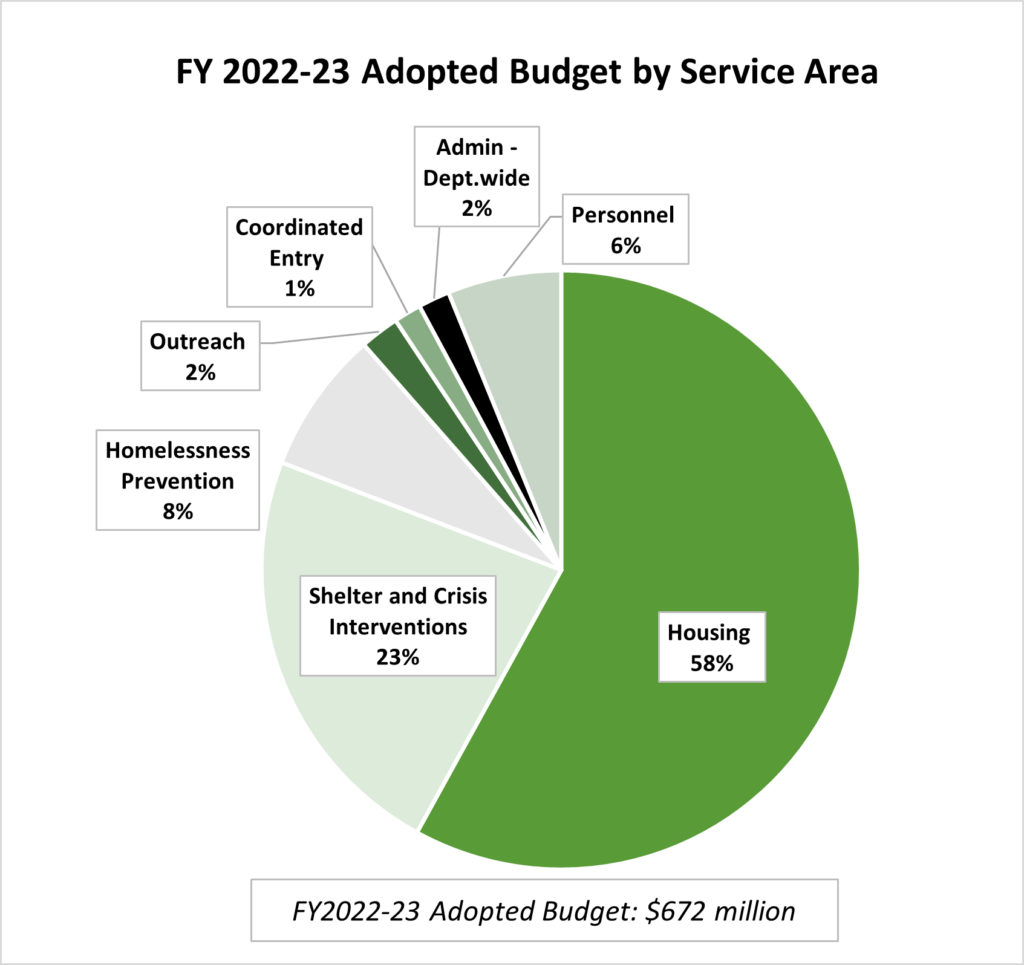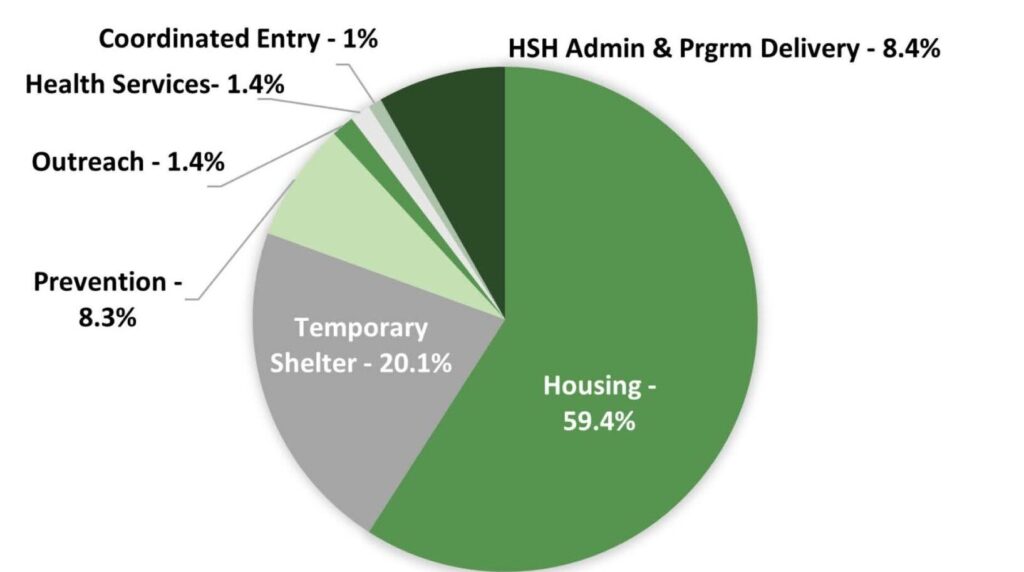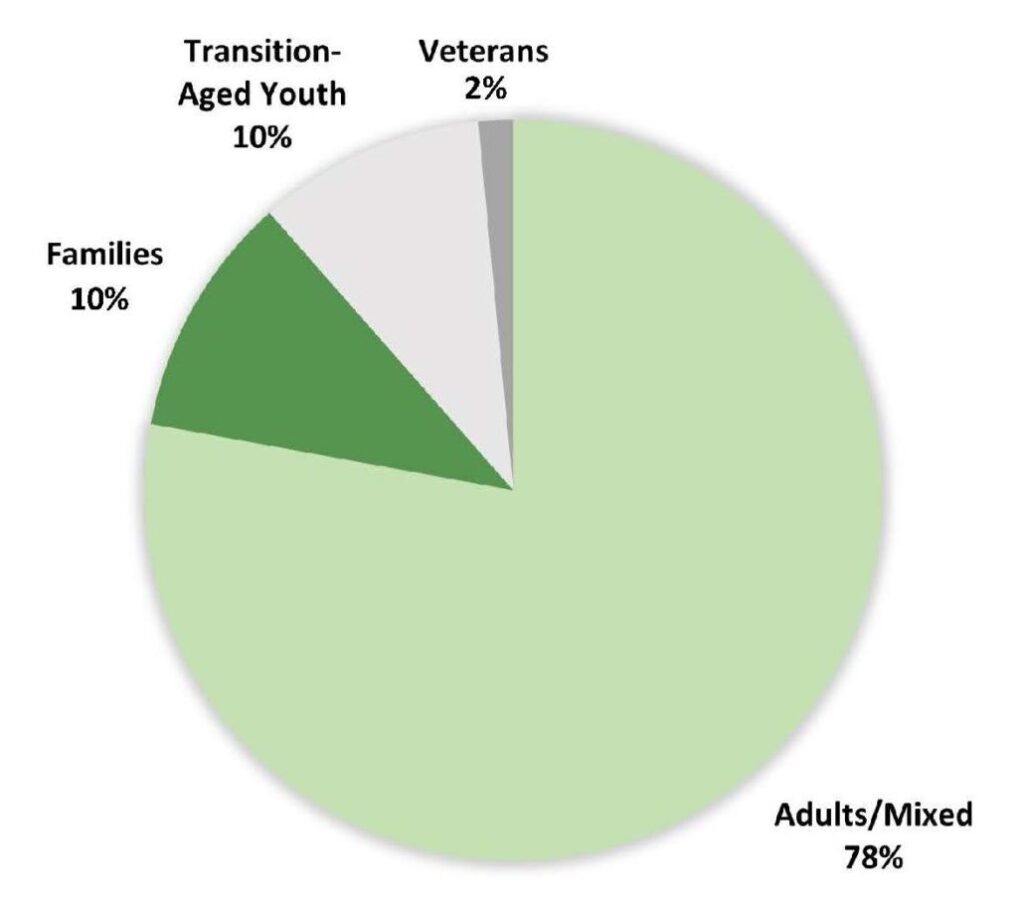Housing provides exits from homelessness through subsidies and supportive services.
- Scroll down for an inventory of HSH’s housing resources.
- Information about each program type is available below the dashboards.
- Learn how to access HSH’s housing.
- Get information about monthly placements to HSH’s housing and the demographics of people housed.
Inventory of Housing Resources
The dashboard below includes an inventory of HSH’s housing resources broken out by household type and housing program type.
For mobile view, click the arrow on the bottom for page 2 or view on a separate page.
We also track the number of units and beds dedicated to young adults ages 18 to 24, chronically homeless people, and veterans.
For mobile view, click the arrow on the bottom for page 2 or view on a separate page.
Housing Program Types
Permanent supportive housing (PSH):
PSH offers tenants long-term affordable housing with a range of supportive services, including case management and housing retention assistance. Tenants pay up to 30% of their income in rent.
- Site-based permanent supportive housing: Tenants live in units in a building that the City or a non-profit partner owns or master leases. Support services are located on site. Service levels vary by program. Some buildings include additional services like nursing, education and job training, youth and child programming, and food security support.
- Scattered-site permanent supportive housing: Tenants use subsidies to live in private-market units and receive support from mobile service providers.
- Flexible Housing Subsidy Pool (FHSP): Tenants use subsidies to live in units on the private rental market through partnerships with landlords and non-profit partners.
- Federal voucher programs: Tenants receive ongoing subsidies to lease units of their choice on the private market. The U.S. Department of Housing and Urban Development covers a portion of the voucher holder’s rent based on their income. These housing choice voucher programs include:
Rapid re-housing:
Rapid re-housing is a time-limited subsidy that gradually decreases as the tenant stabilizes and finds housing outside of the homelessness response system. Tenants live in private-market units and access supportive services, including case management and housing retention assistance.
Housing ladder:
The housing ladder program is for PSH residents who no longer require intensive case management support services. HSH refers these residents to a more independent housing setting. Their PSH units become available for unhoused people who need PSH with intensive case management services, while the housing ladder clients maximize their independence. Learn more about the housing ladder.
Other Resources
- The Mayor’s Office of Housing and Community Development manages DAHLIA, an online portal for affordable rental and homeownership opportunities in San Francisco. Visit the online portal.
- Get information about how people experiencing homelessness can access housing resources through Coordinated Entry.
- Learn about housing resources specific for veterans.
- Access data about vacancies in HSH’s site-based PSH portfolio.
